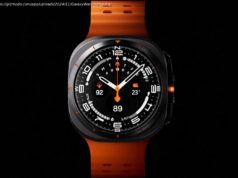The smallest PC cases you can buy are also today’s most diverse and complex. Here’s how to shop for a compact PC chassis, along with the best ones we’ve built in at PC Labs.
Today’s PCs come in enough shapes to dazzle a dodecahedron, but in the realm of desktops, three main classes of aftermarket PC case reign supreme: full ATX, MicroATX, and Mini-ITX. These three case “form factors” make up the bulk of the market for chassis, and you can simply think of them as big (ATX), medium-size (MicroATX), and small (Mini-ITX). Each of the form factors has its own strengths and weaknesses; in this guide, we’re going to go compact and focus on the Mini-ITX ones. These cases exude sex appeal and intrigue, teasing the idea of a powerful PC in shoebox or smaller size. They also show the most originality—and the least adherence to standardization—of all the kinds of PC case. Let’s see what makes Mini-ITX as a concept, and the cases that use this form factor, stand out, and steer you to some of the best examples that we’ve built PCs inside. What Is a Mini-ITX Case? The benefits of a Mini-ITX form factor PC are straightforward. Mini-ITX cases are smaller than the rest of the pack, and in some workspace or living-space scenarios, tiny is better by nature. In particular, a Mini-ITX PC is often the best option in offices where space is at a premium: say, as a laptop alternative for people working at common tables, or in cramped cubicles. (No, this hasn’t been a thing for the last year or more, but plenty of us have home offices we wish were far less cluttered.) Unlike chassis in the larger MicroATX and ATX sizes, many Mini-ITX PC cases can sit comfortably on desks, in niches, on shelves, or under a monitor without being obtrusive. Some are even designed to mount behind monitors or under desks to hide them from view. The Mini-ITX case isn’t bound by a strict size limit; what makes a case Mini-ITX is its support for the Mini-ITX motherboard form factor, and none larger. (More on that in a bit.) It would be unwise to judge the potential of Mini-ITX PCs and cases solely by their size, though. The amount of processing power they can host doesn’t scale up and down 1:1 with the cubic volume. Indeed, much depends on the individual design. For example, today’s big, legacy-style ATX towers tend to allot plenty of space for stacks of hard drives or big liquid coolers that most PC users will never install. Most Mini-ITX systems allow you to install standard desktop motherboards and socketed desktop CPUs, and under the right conditions can be just as powerful as a kitted-out ATX tower. A Mini-ITX motherboard alongside a big liquid cooler in a Phanteks Eclipse chassis (Photo: Michael Justin Allen Sexton) That’s not to say that there aren’t limiting factors—physics still applies. The major drawbacks to a Mini-ITX build lie in two main areas: the amount of interior space, which can limit what you can fit inside the chassis, and the thermals and cooling, which encompass the chassis ventilation, any fans installed (or that you can install), and the CPU and GPU you choose. Let’s start with the space issue. Mini-ITX cases come in more unusual, one-off shapes and sizes than other kinds of PC cases, but their one unifying aspect is the class of the motherboard they accept. As noted earlier, the Mini-ITX form factor defines both a size class of motherboards, as well as the cases that fit those boards. The In Win B1: No GPUs allowed, just integrated graphics! (Photo: John Burek) Mini-ITX motherboards measure 6.7 by 6.7 inches, with mounting holes in prescribed locations; Mini-ITX cases, then, are built around accommodating these board dimensions. That said, some Mini-ITX cases are much bigger than others in terms of height or volume. But by definition, a “true” Mini-ITX case won’t accommodate any board bigger than a Mini-ITX one, with the exception of a few that also support the slightly larger (and uncommon) Mini-DTX form factor. Mini-DTX boards are slightly taller than Mini-ITX boards, at 8 by 6.7 inches. (The next biggest size class for motherboards, MicroATX, is 9.6 inches square and defines the next-largest class of PC cases.) The compact nature of Mini-ITX cases and their associated motherboards usually doesn’t leave much room for other components, lots of drives or fans, big cooling gear, or other parts. Mini-ITX motherboards can house only two RAM DIMMs and a single PCI Express x16 add-on card. Depending on the design of the case, the PCI Express card support might be limited to a half-height, single-slot card, but some Mini-ITX cases can hold full-height, beefy dual- or triple-slot graphics cards without any issues. It all depends on the design, and that is why it pays to scrutinize a case’s specs (and read reviews) before buying. The Limits of Power: Cooling Fans, PSUs, and More A whole host of other variables also limit what you can and can’t put inside a Mini-ITX system. Some of them have nothing to do with the Mini-ITX case itself. Take the Mini-ITX motherboard. Some are limited in how much power they can handle, or cap the power draw of the CPU you can install. Depending on the mobo, you may have a top allowable TDP rating of, say,65 watts, though this is far from true for all Mini-ITX boards. Plus, to cool the CPU, depending on the chassis design, you may be forced to use a low-profile fan cooler similar to the small stock coolers that AMD and Intel provide with their mainstream desktop CPUs. In some cases, it’s possible to add larger air coolers, but again, this varies from one chassis to another.






